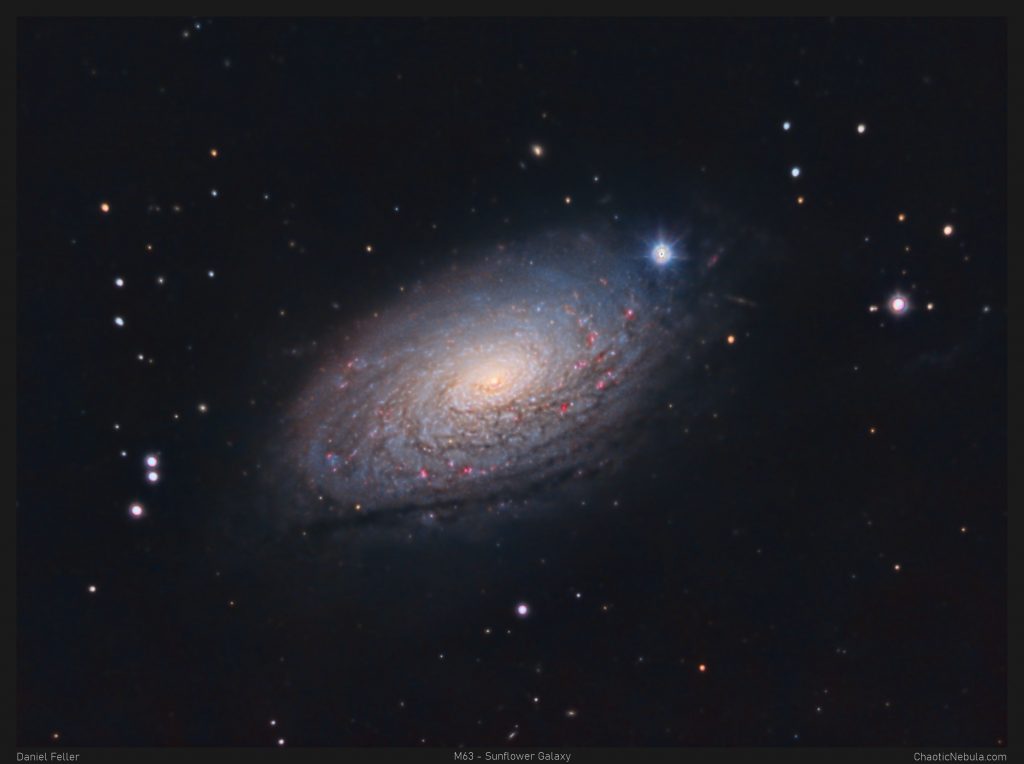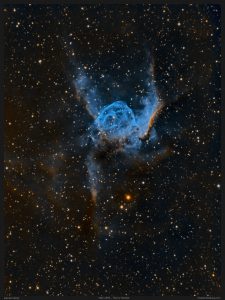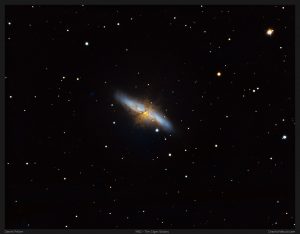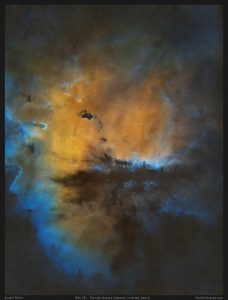The M95 galaxy, the Sunflower Galaxy (also known as NGC 5055), is located in the constellation Canes Venatici. It is a spiral galaxy 29 million light years away. The galaxy is active (weakly), which means it is producing stars in the red regions. Those regions are hydrogen emissions (hydrogen-alpha).

Imaging Details
- Workflow: LRGB+HA
- Lum Filter: 200*180
- Red Filter: 48*300 seconds
- Green Filter: 48*300 seconds
- Blue Filter: 48*300 seconds
- Hydrogen-Alpha: 18*500 seconds
- Binning: 1×1
- Total Imaging Time: 25 hours
- Imaging Dates (11 nights):
- 5/5/2021
- 5/8/2021
- 5/10/2021
- 5/12/2021
- 5/13/2021
- 5/15/2021
- 5/17/2021
- 5/31/2021
- 6/4/2021
- 6/5/2021
- 6/7/2021
M63 Imaging Notes
For M63, my plan was to try and capture a lot of data to see how good of an image I could create in my heavily light polluted skies (Bortle 7). Plus, my telescope is running at F/10, which means I need to capture more frames in order to create a decent image.
Based on this, I’ve determined that in order to create a good final image, I need (at a minimum) the following number of frames per filter for galaxies (of course this is all influenced by the brightness of the galaxy and the transparency of the sky)
- LUM: 100
- RGB: 36
- HA: 18
Some other quick tips on this galaxy
- This galaxy also has some active star forming regions, which show up nicely with a Hydrogen-Alpha filter.
- I’ve finally corrected my issue with flats. I purchased a tracing tablet, which not only creates an evenly illuminated light source, but it also blocks out unwanted, stray light. This means I don’t have to capture my flats in the middle of the night.
- I also learned some new processing tricks that helped with the integration of my LUM and Hydrogen-Alpha frames. Moving forward, I will avoid using the LRGB and NRGBCombination functions. I will document the new process in the near future.


